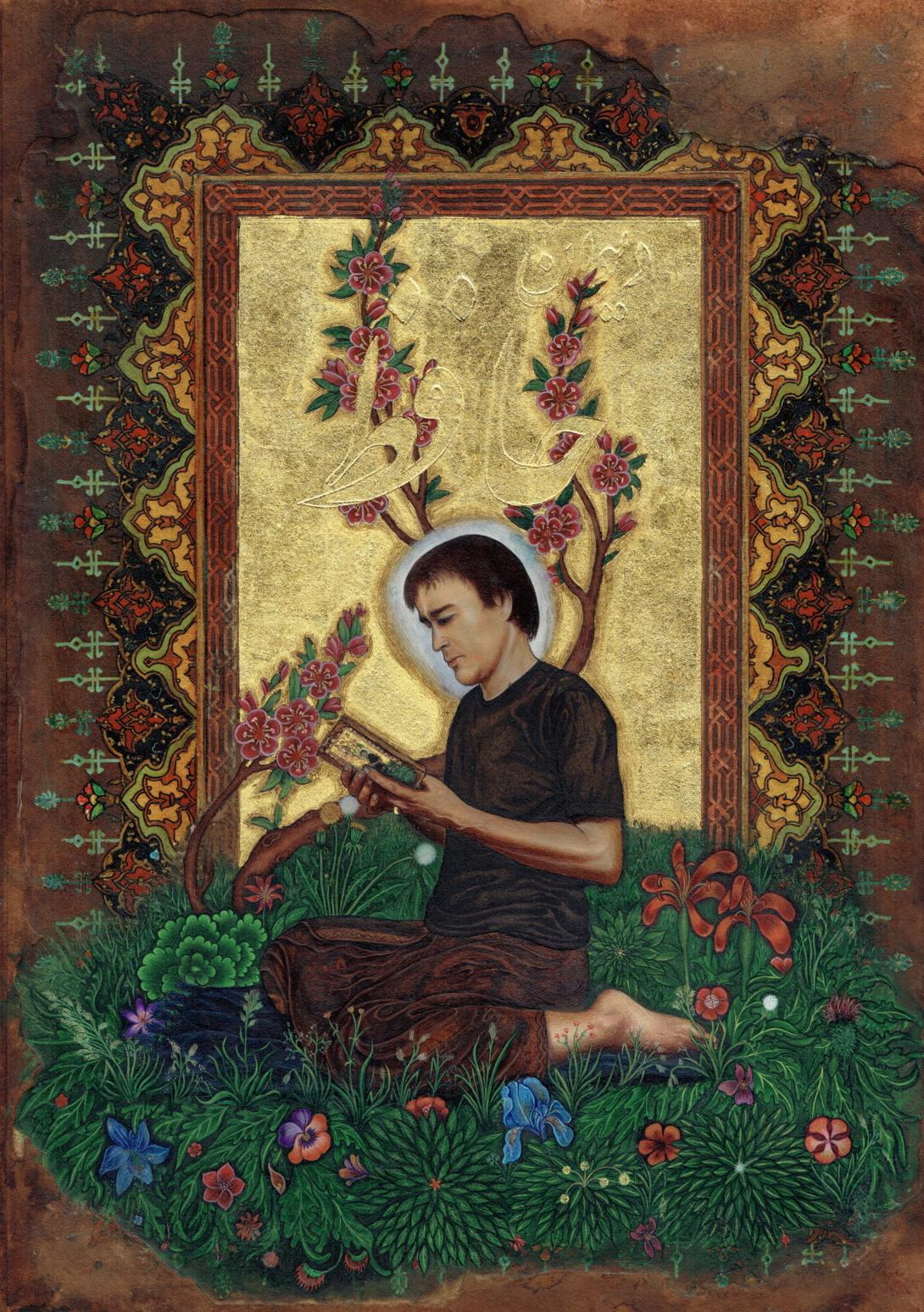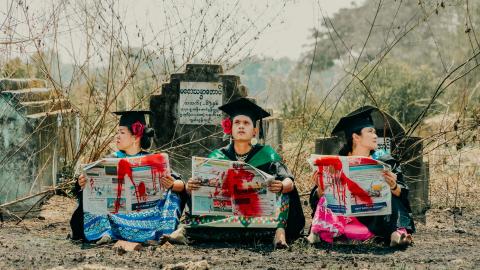Amin Taasha
APT10
Born 1995, Bamiyan, Afghanistan
Lives and works in Yogyakarta, Indonesia
Amin Taasha belongs to the Hazara community of central Afghanistan and has memories of playing around the Buddhas of Bamiyan, which were destroyed during the Taliban regime, before his family moved to Kabul to escape persecution. In 2012, Taasha’s works drew the attention of authorities in Kabul and he was intimidated at gunpoint. He quickly sought opportunities to travel abroad and received a scholarship to study in Indonesia the following year.
For many years, Taasha has carried a book written by the fourteenth-century Persian poet Hafiz, which has particular significance for him and his family. He has used the sheets of poetry as the base of a vast painting project, onto which he renders symbols and motifs from his own life and the history and mythology of Afghanistan and Central Asia. Figures and motifs in watercolour appear over the printed poetry with highlights of gold, silver and copper. They capture the Gandharan Buddhist-style imagery for which Bamiyan was known, as well as the ammunition and weaponry of the Taliban, mythological characters and historical symbols.

Explore the works
A selection of Hafiz in diaspora works are included below; dig deeper into Collection Online to explore all 42 of Amin Taasha's works in the QAGOMA Collection.

Hafiz in diaspora 2021
- TAASHA, Amin - Creator

Hafiz in diaspora 2021
- TAASHA, Amin - Creator

Hafiz in diaspora 2021
- TAASHA, Amin - Creator

Hafiz in diaspora 2021
- TAASHA, Amin - Creator

Hafiz in diaspora 2021
- TAASHA, Amin - Creator

Hafiz in diaspora 2021
- TAASHA, Amin - Creator

Hafiz in diaspora 2021
- TAASHA, Amin - Creator

Hafiz in diaspora 2021
- TAASHA, Amin - Creator

Hafiz in diaspora 2021
- TAASHA, Amin - Creator

Hafiz in diaspora 2021
- TAASHA, Amin - Creator

Hafiz in diaspora 2021
- TAASHA, Amin - Creator

Hafiz in diaspora 2021
- TAASHA, Amin - Creator

Hafiz in diaspora 2021
- TAASHA, Amin - Creator

Hafiz in diaspora 2021
- TAASHA, Amin - Creator

Hafiz in diaspora 2021
- TAASHA, Amin - Creator

Hafiz in diaspora 2021
- TAASHA, Amin - Creator

Hafiz in diaspora 2021
- TAASHA, Amin - Creator

Hafiz in diaspora 2021
- TAASHA, Amin - Creator
